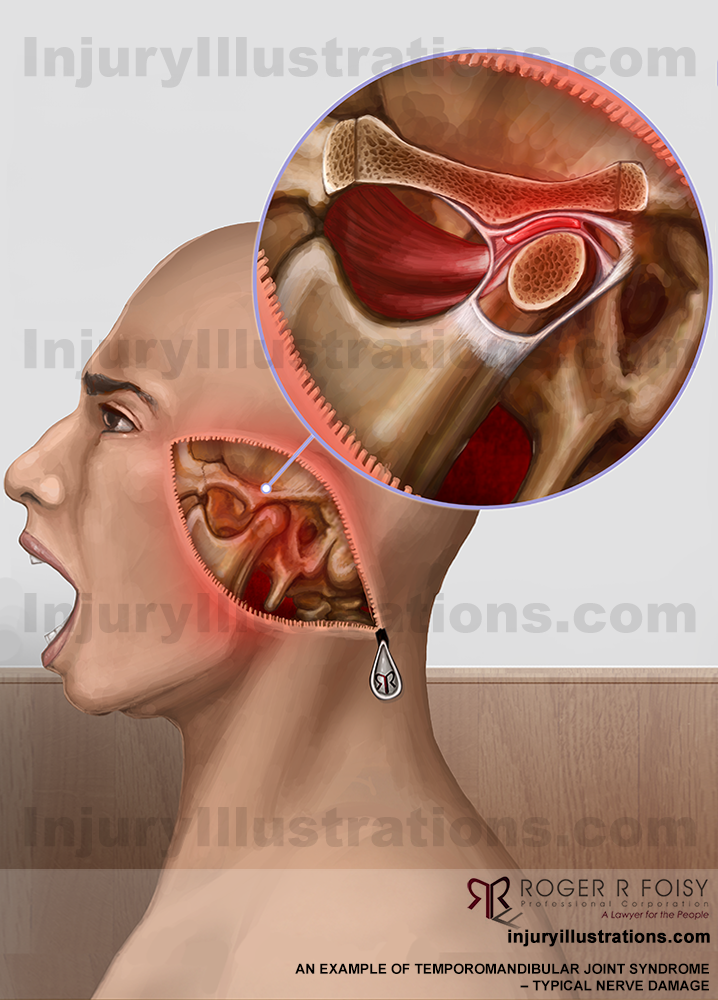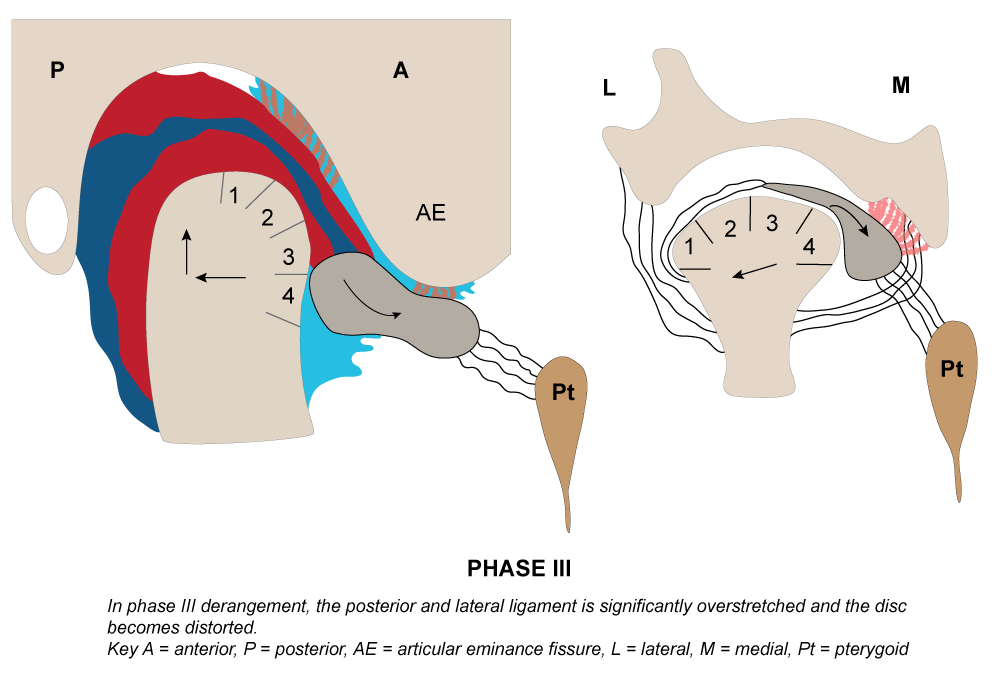TMJ dislodgement, or temporomandibular joint dislocation, occurs when the jaw moves out of place. This condition can cause pain and difficulty in closing the mouth.
The temporomandibular joint (TMJ) is where your jaw connects to your skull, allowing you to open and close your mouth. Dislodgement of this joint can result in a range of symptoms, including a misaligned bite, jaw stiffness, and audible clicking noises during jaw movement.
Those experiencing TMJ dislocation often report a sudden locking of the jaw when yawning or opening their mouth too wide. This condition can stem from a variety of causes, such as trauma to the jaw, excessive mouth opening, or underlying health issues like arthritis. Quick and appropriate treatment is essential for relieving pain and restoring normal jaw function. Seeking the advice of a dental professional or a TMJ specialist is the best course of action for individuals dealing with this uncomfortable joint issue.
Understanding Tmj Dislodgement
Imagine your jaw as a complex system, bustling with activity each time you chew or talk. At the heart of this system lies the Temporomandibular Joint (TMJ), a key player in the jaw’s movement. But what happens when this crucial joint slips out of alignment? This is TMJ dislodgement, a condition that can cause discomfort and affect jaw function. Let’s delve into the anatomy of this joint, understand what TMJ dislocation is, and explore the common reasons why this might occur.
Anatomy Of The Temporomandibular Joint (tmj)
The TMJ connects your jawbone to your skull. This hinge is flexible; it lets you move your jaw up and down or side to side. Think of it as a sliding hinge because it has both hinging and sliding motions. This unique design helps you talk, chew, and yawn. The TMJ is one of the most complex joints in your body.
What Is Tmj Dislocation?
TMJ dislocation happens when the jaw joint shifts out of its normal position. This can cause your jaw to get stuck open or make it challenging to close your mouth. You might feel pain or have trouble moving your jaw. Dislocation can be a one-time event or keep happening.
Common Causes Of Tmj Dislodgement
- Injury: A knock to the jaw can dislodge it.
- Dental work: Procedures might cause strain.
- Grinding teeth: This habit stresses the TMJ.
- Wide yawning: Opening too far can shift the joint.

Credit: nqsurgicaldentistry.com.au
Symptoms Of Tmj Dislocation
Temporomandibular Joint (TMJ) dislocation can affect your daily activities. It can cause pain and make it tough to talk or eat. It’s vital to know the signs. Spotting these early can help you get treatment fast. Below are key symptoms to watch out for.
Pain And Discomfort
TMJ dislocation often leads to discomfort. This might be a dull ache around your ear or a sharp pain when you move your jaw. Some people feel it near their temples too. The pain can even spread to your neck and shoulders.
- Jaw pain that worsens with movement
- Pain that radiates to the neck or shoulders
- A sensation of tenderness around the ears
Limited Jaw Mobility
If your TMJ slips out of place, moving your jaw can be tough. Your mouth might not open wide, or it could lock when you try to open or close it. These signs hint at a dislocated TMJ:
- Jaw locks in position, making it hard to open or close
- Difficulty chewing or biting
- Challenges in performing normal jaw movements
Audible Clicking Or Popping Sounds
A clear sign of TMJ dislocation is weird sounds when you move your jaw. Clicks or pops can be loud or soft. These are not normal and suggest that the TMJ isn’t moving as it should.
| Jaw Movement | Sound Type |
|---|---|
| Opening Mouth | Click |
| Closing Mouth | Pop |
These sounds might come with pain or happen on their own. If you notice them, it’s good to see a doctor.
Diagnosis Of Tmj Dislocation
Diagnosing TMJ dislocation involves identifying the joint’s misalignment. This condition can cause pain and difficulty in jaw movement. Experts use different methods for a thorough diagnosis.
Physical Examination
The first step is an in-depth physical check. A healthcare provider examines the jaw for signs of misalignment. They will feel for tenderness and observe jaw movements.
- Check for jaw asymmetry
- Assess ease of mouth opening
- Identify any jaw deviance when opening
Imaging Tests
Imaging tests offer a deeper look into the jaw’s structure. These tests can include:
| Type | Purpose |
|---|---|
| X-rays | Display bone details |
| CT scans | Show bone and soft tissue |
| MRI | Visualize soft tissue |
Differential Diagnosis
Other conditions can mimic TMJ dislocation. Accurate diagnosis is crucial. Some conditions to rule out include:
- Toothache
- Ear infection
- Trigeminal neuralgia

Credit: www.injurylawyercanada.com
Immediate Management Of Tmj Dislocation
Immediate Management of TMJ Dislocation is crucial to alleviate pain and prevent further complications. The temporomandibular joint (TMJ) connects your jawbone to your skull. Dislodgement of this joint can cause discomfort and limited movement. Knowing how to respond when TMJ dislodgement occurs is essential for quick relief and recovery.
First Aid Measures For Tmj Dislodgment
A swift response can help manage a dislodged TMJ. Follow these steps immediately:
- Stay Calm: Panic can worsen the situation.
- Don’t Force the Jaw: Avoid moving the jaw.
- Apply Cold Packs: This reduces swelling and relieves pain.
- Maintain a Soft Diet: Choose foods that don’t strain the jaw.
- Support the Jaw: Keep it in a restful position.
When To Seek Professional Help
If you notice the following signs, get medical help:
- Persistent Pain: Pain that doesn’t subside with first aid.
- Lockjaw: Inability to close the mouth.
- Difficulty Speaking or Swallowing: Basic functions are impaired.
Manual Reduction Techniques
Professionals may perform these techniques:
- Hippocratic Method: A gentle downward pressure is applied.
- Wrist Pivot Method: The pivot motion helps realign the joint.
- Allopathic Method: Another approach to reposition the jaw.
Important: Manual techniques should be executed by a trained professional to avoid further injury.
Long-term Treatment Options
Managing TMJ dislodgement calls for enduring solutions. Long-term treatment options optimize jaw function and aim to reduce discomfort. A tailored plan might combine medication, therapy, or even surgery. Let’s explore the relief and recovery paths for persistent TMJ issues.
Medication And Pain Relief
Medication can ease TMJ pain significantly. It’s crucial for ongoing comfort. Prescriptions may include:
- Anti-inflammatories to reduce swelling
- Muscle relaxants for spasm relief
- Pain relievers for acute symptoms
Consistent use under a doctor’s guidance can improve daily life. Always seek professional advice before starting any medication.
Physical Therapy And Exercises
Non-invasive therapy promotes jaw healing. A skilled therapist can guide you through specialized exercises. These stretch and strengthen jaw muscles. Benefits of physical therapy include:
- Better joint mobility
- Enhanced muscle function
- Decreased pain and discomfort
Routine practice of these exercises at home continues the progress made in therapy sessions.
Surgical Interventions
In severe cases, surgery may be advised. This is often the last resort when other treatments fail. Options include:
- Arthrocentesis: minor procedure to remove joint fluid
- TMJ arthroscopy: less invasive and quicker recovery
- Open-joint surgery: to repair or replace the joint
Decide on surgery after thorough discussions with a TMJ specialist. Post-operative care is fundamental for a successful recovery.
Preventing Recurrent Tmj Dislocations
The temporomandibular joint (TMJ) plays a critical role in everyday jaw movements. Recurrent TMJ dislocations can affect one’s quality of life seriously. The good news is that with some proactive strategies, you can reduce the risk of this painful condition. Below are effective ways to prevent recurrent TMJ dislocations, ensuring a healthier, more comfortable jaw function.
Lifestyle Modifications
Making simple changes to daily habits can significantly impact TMJ health. These include:
- Avoiding chewing gum and tough foods.
- Using both sides of the mouth to chew.
- Practicing good posture, especially when using gadgets.
- Implementing a gentle jaw-stretching exercise routine as advised by a specialist.
Protective Devices And Splints
Splints or mouth guards can provide support and reduce strain on the TMJ. Here’s how they help:
- Wearing an over-the-counter night guard can prevent teeth clenching during sleep.
- Custom-fitted splints might be recommended by dental professionals for better alignment.
- Dental corrections, such as braces, can realign teeth and reduce TMJ stress.
Stress Management Techniques
Stress can contribute to teeth grinding and jaw clenching. Effective stress management includes:
| Technique | Benefits |
|---|---|
| Mindfulness and meditation | Promotes relaxation and eases muscle tension. |
| Yoga or gentle exercise | Enhances overall body and jaw relaxation. |
| Deep breathing exercises | Alleviates stress, reducing the urge to clench the jaw. |
By combining these modifications, devices, and stress management practices, you can help your TMJ stay in place. Remember, timely consultations with healthcare professionals are critical for tailored treatments and recommendations.

Credit: www.treatingtmj.com
Conclusion
Understanding TMJ dislodgement can lead to more effective management and quicker recovery. Schedule regular dental check-ups and prioritize jaw health. Remember, early detection and treatment are key. Share this post to spread awareness about TMJ health. Embrace a pain-free life with a well-cared-for TMJ!

